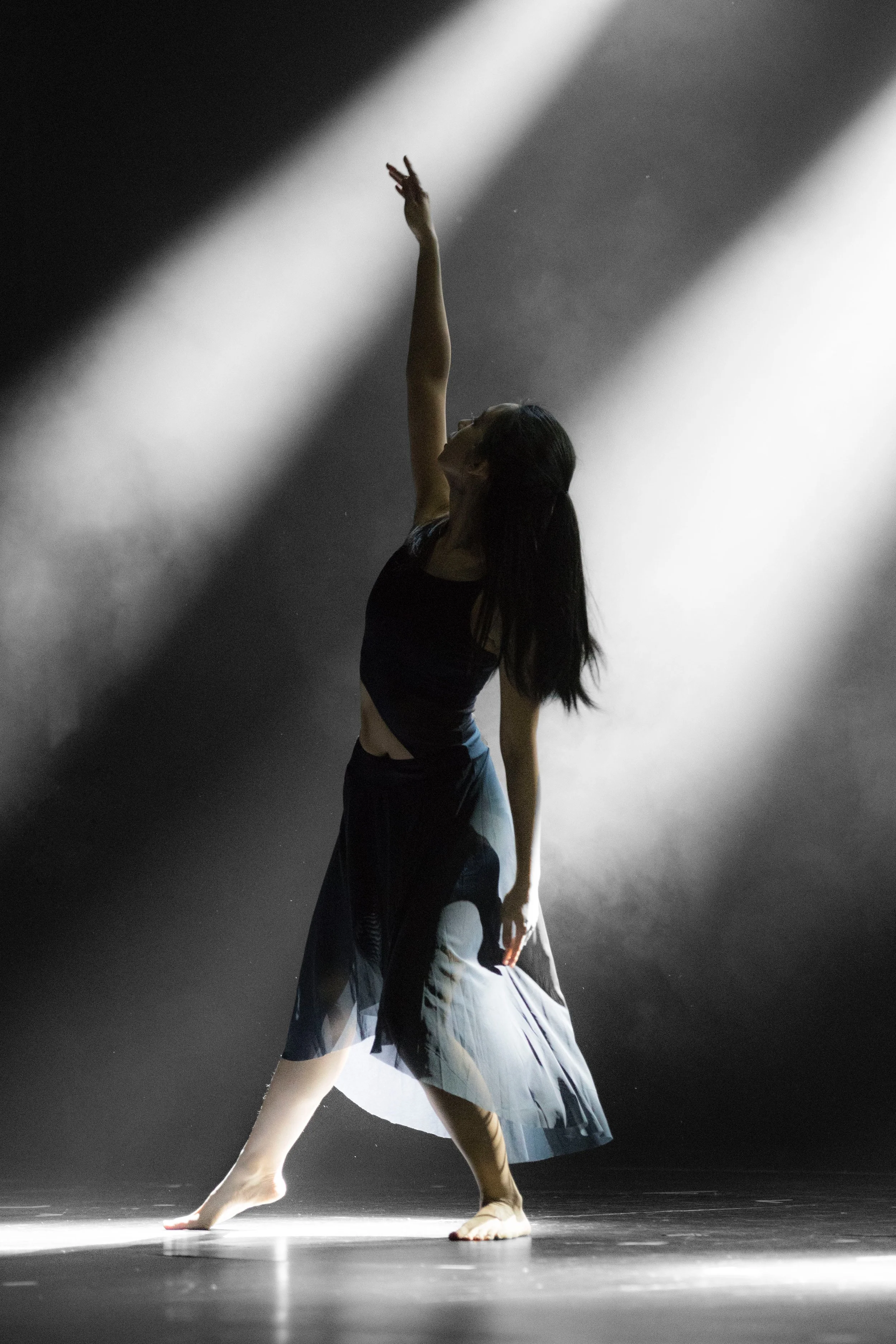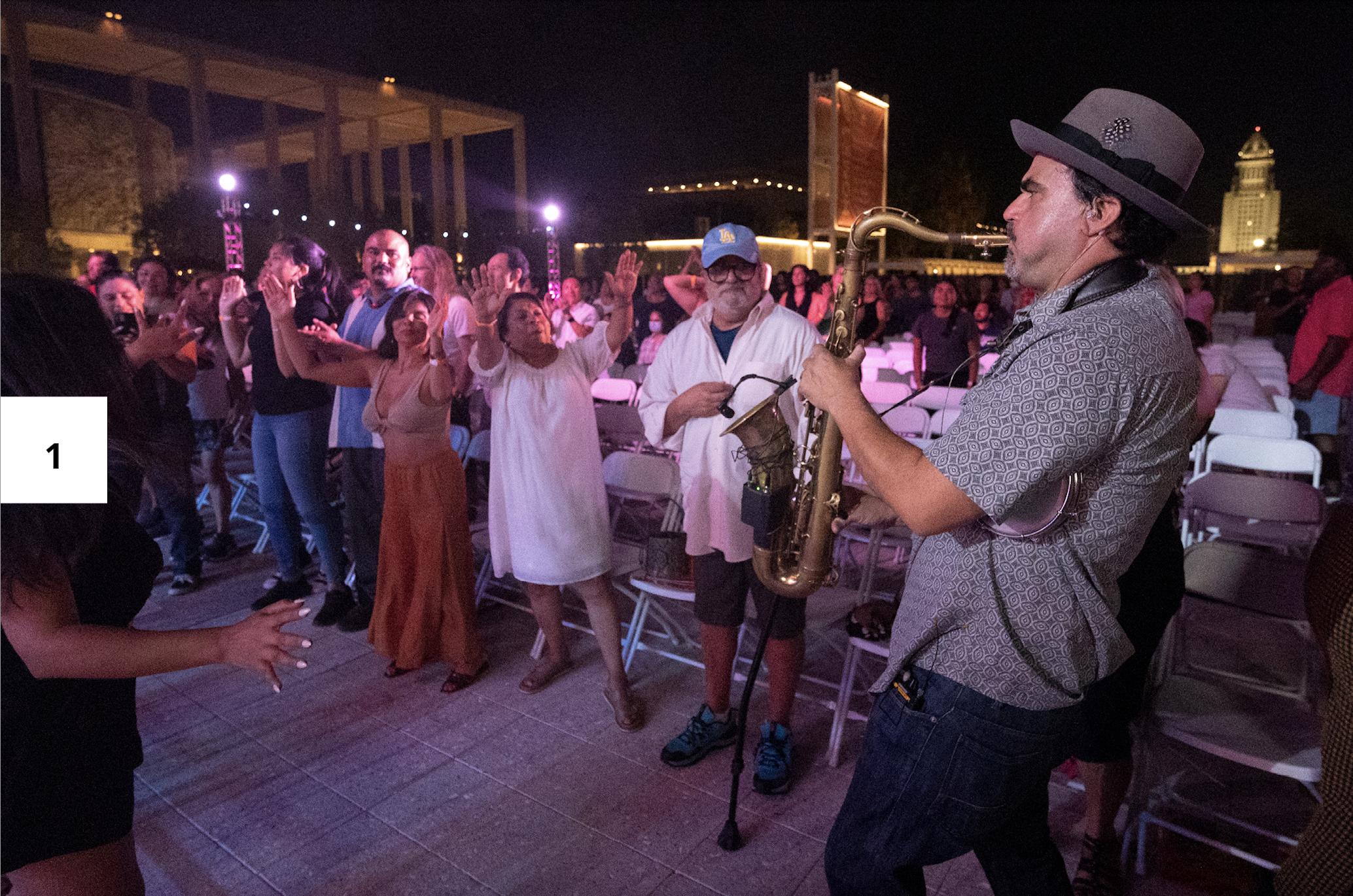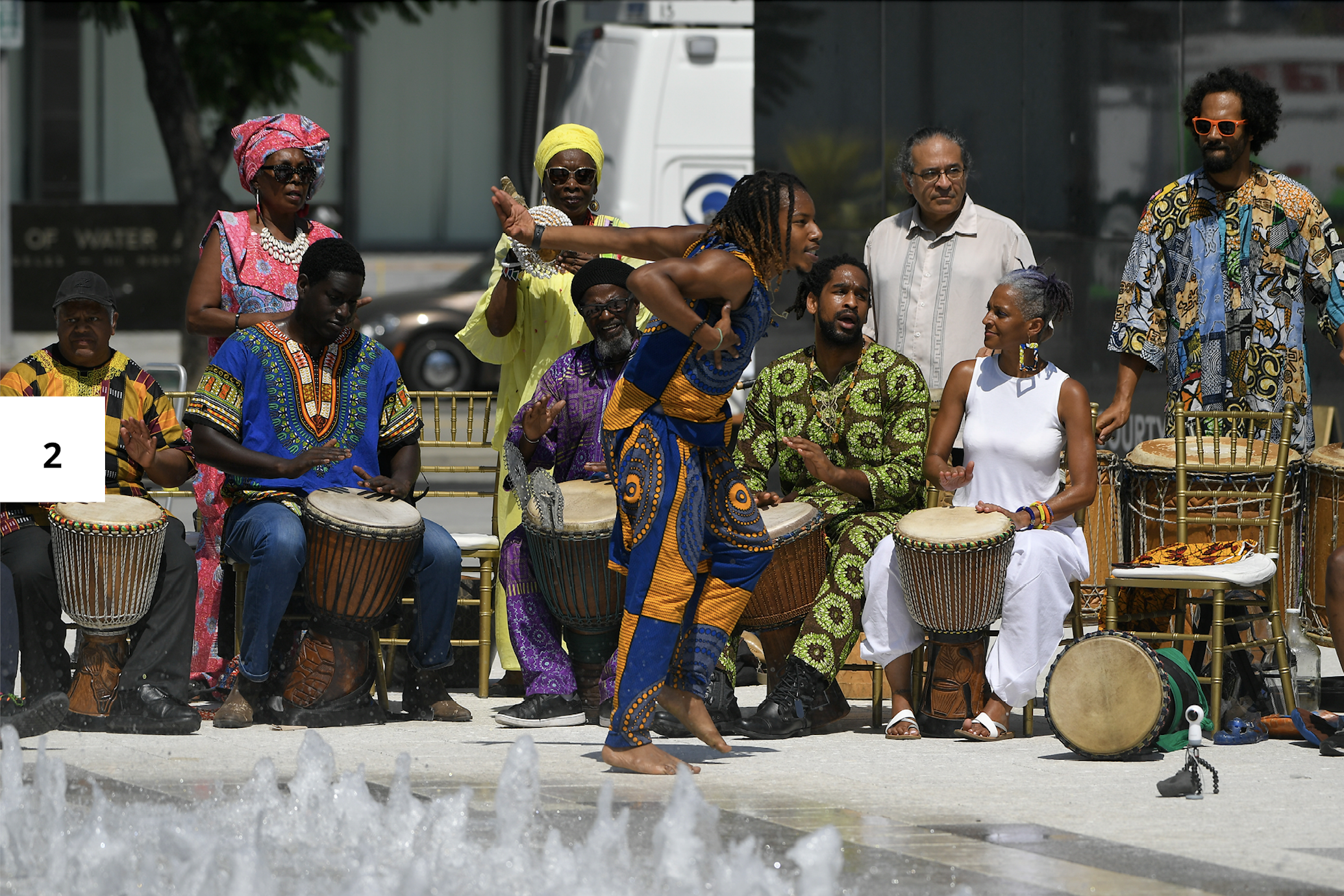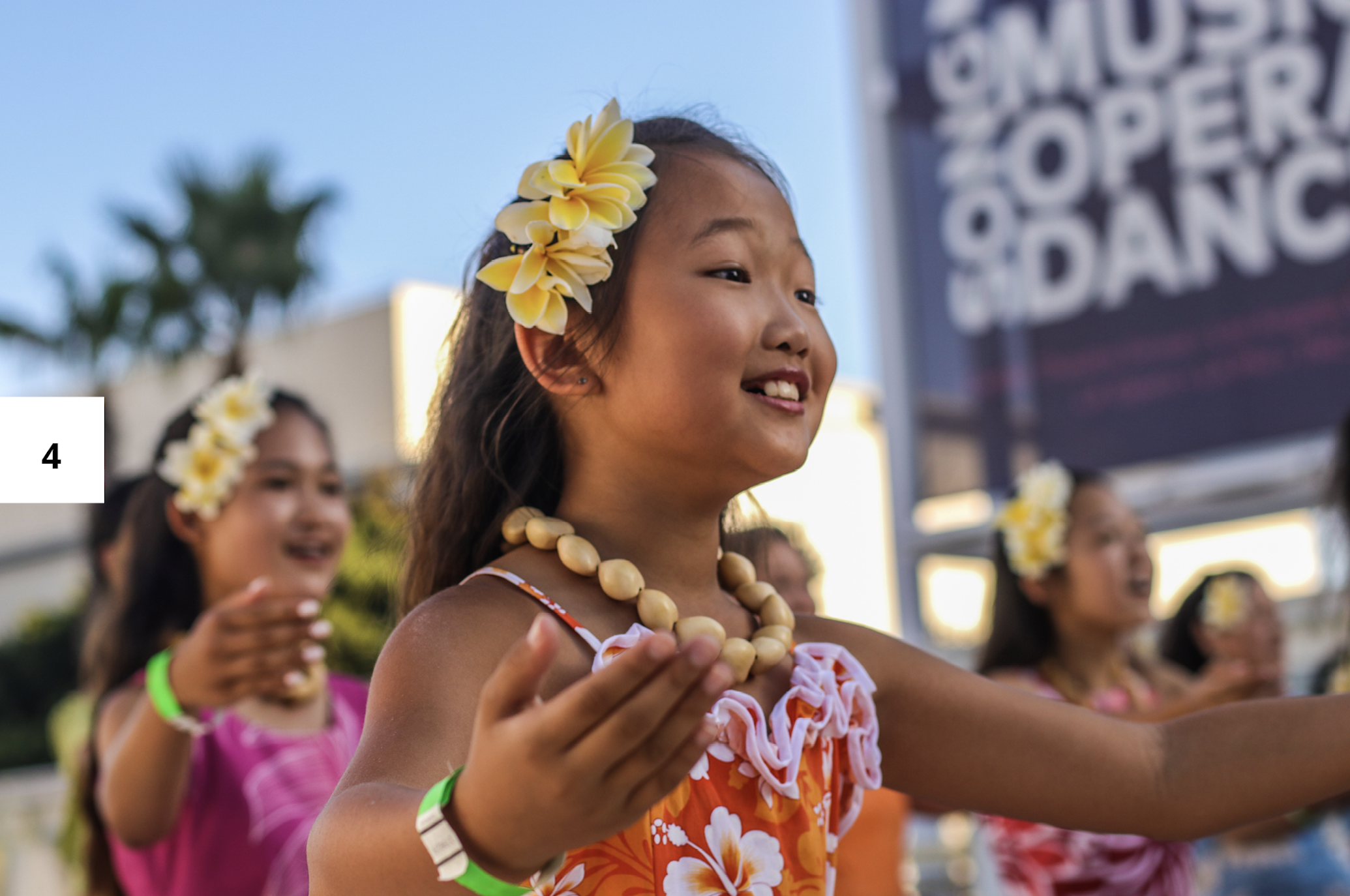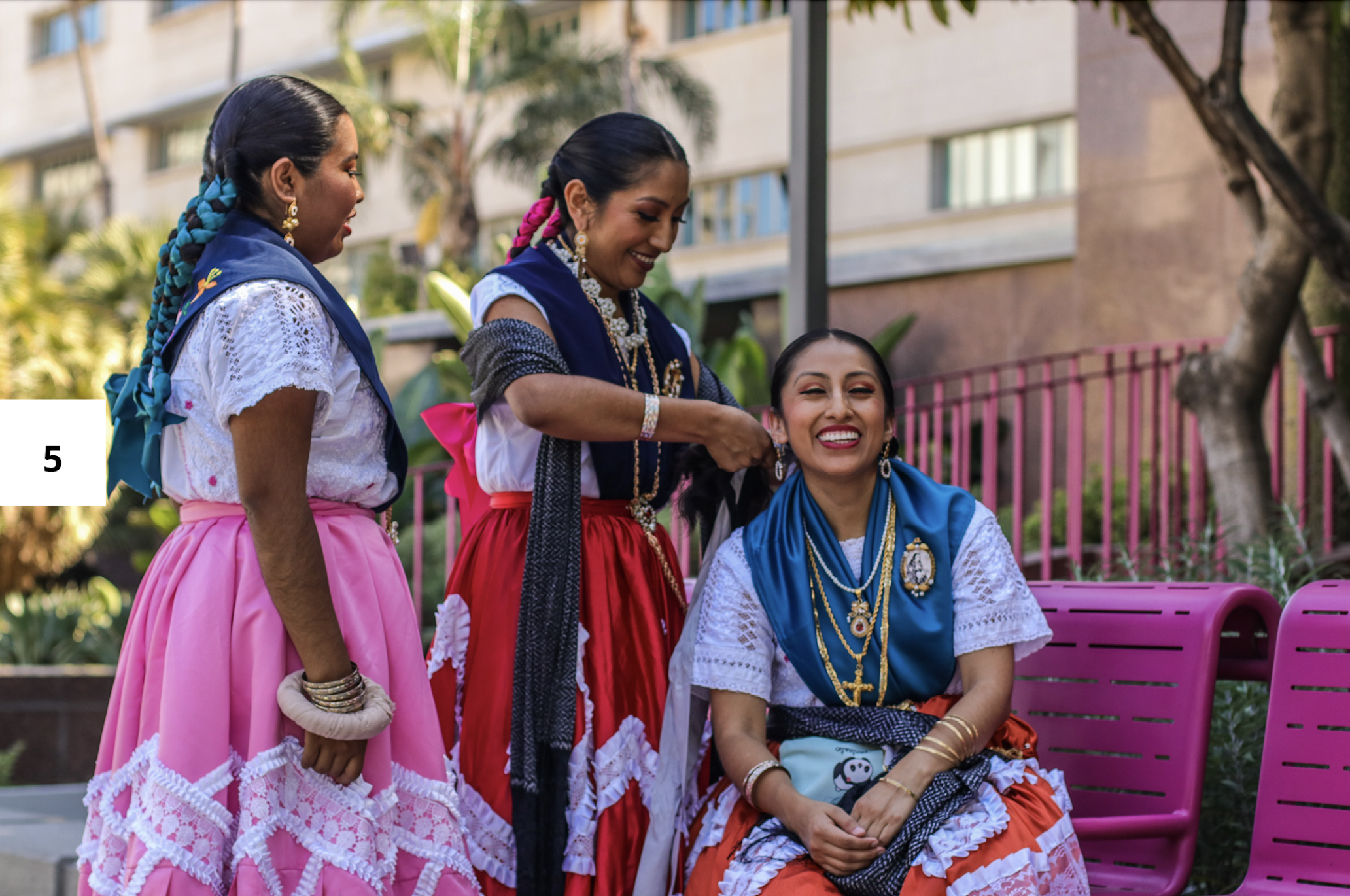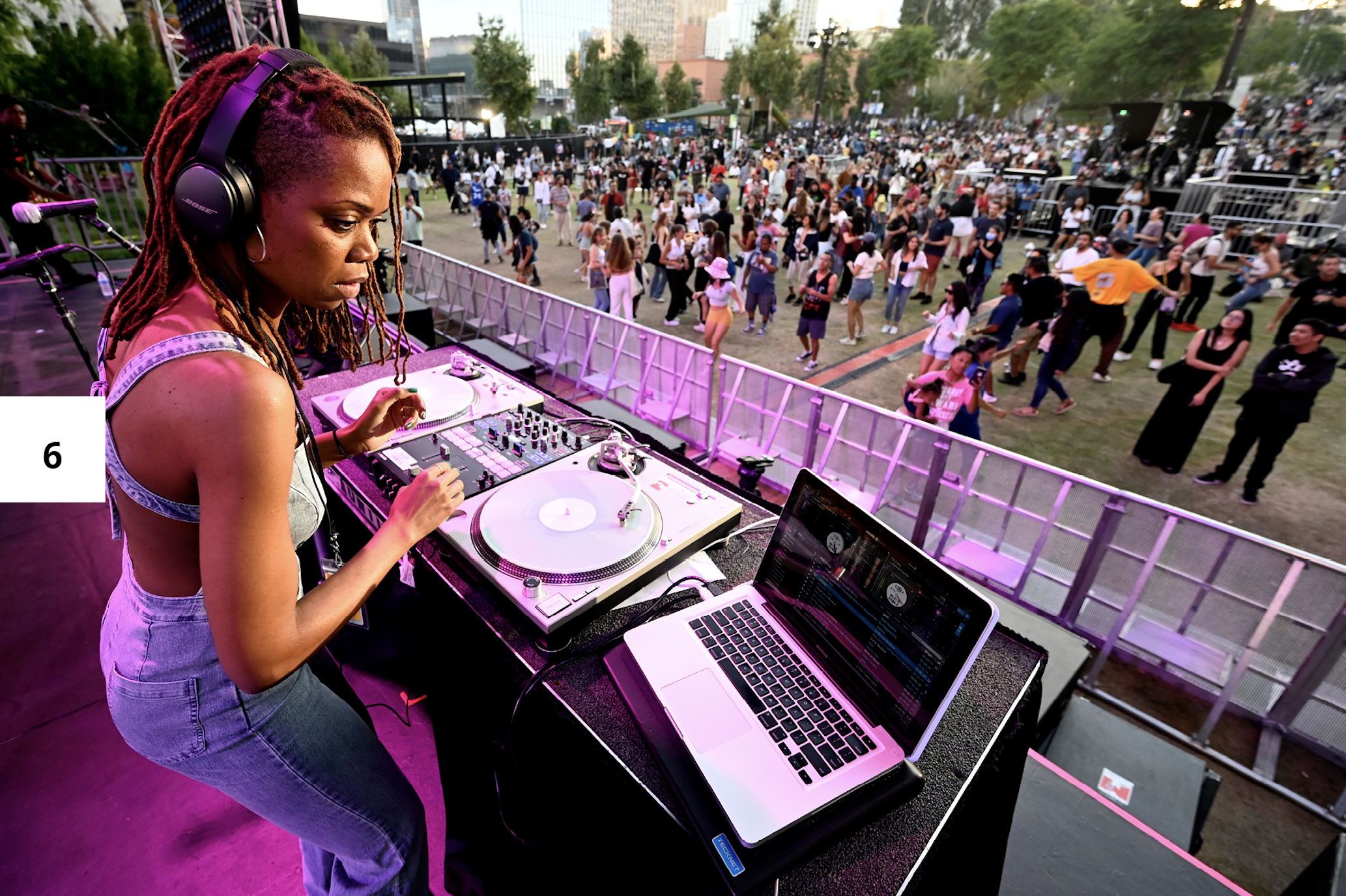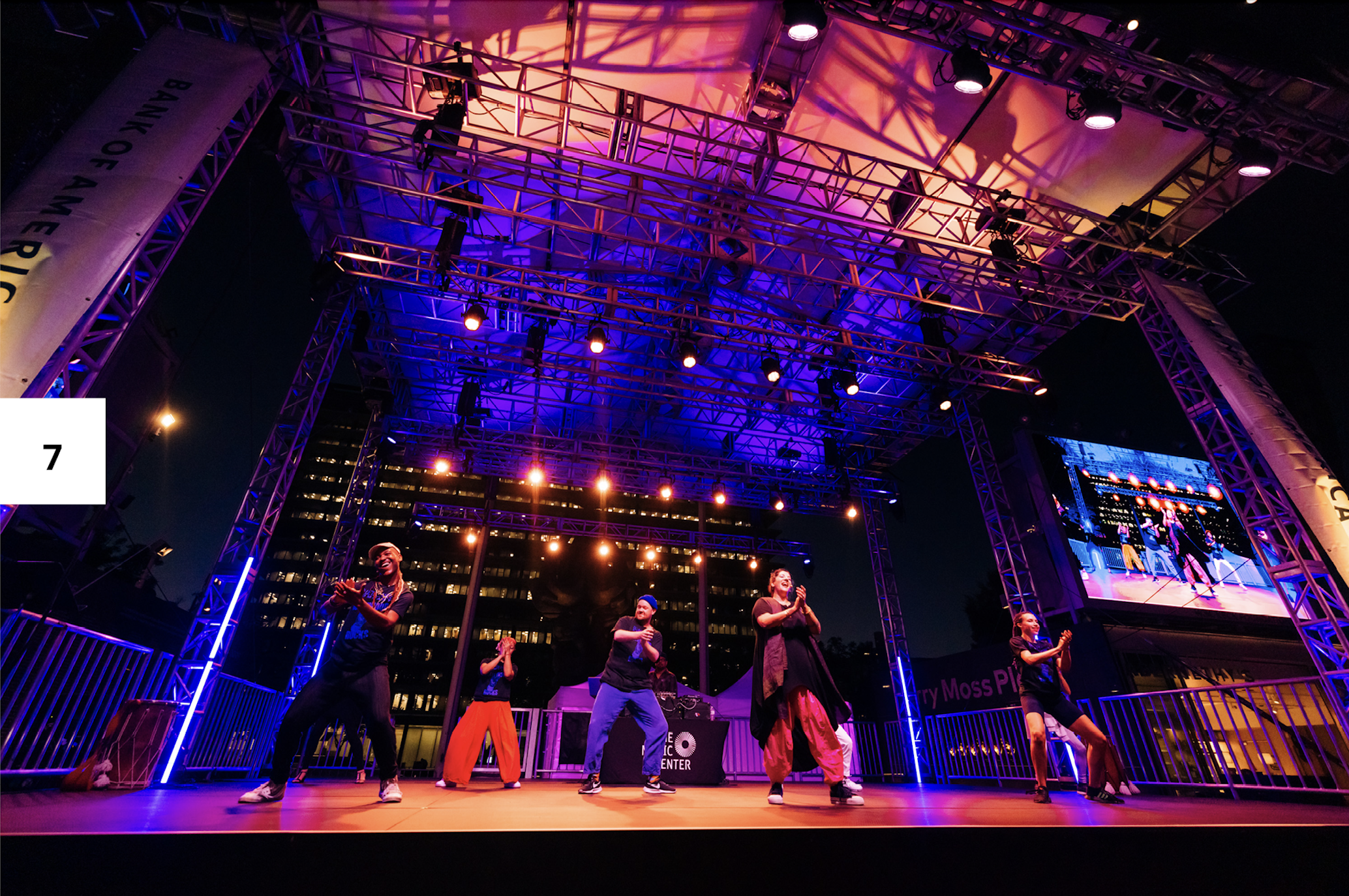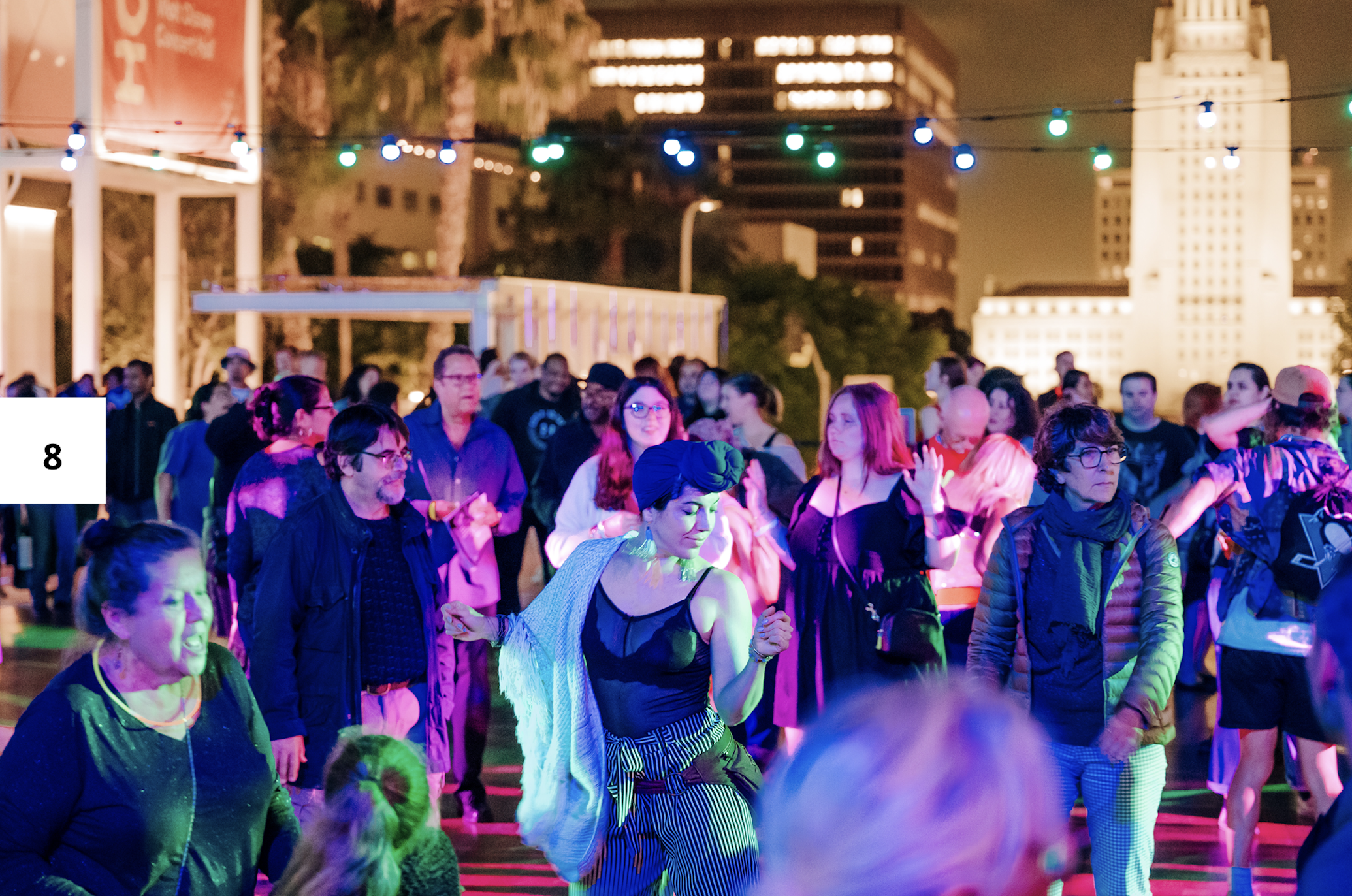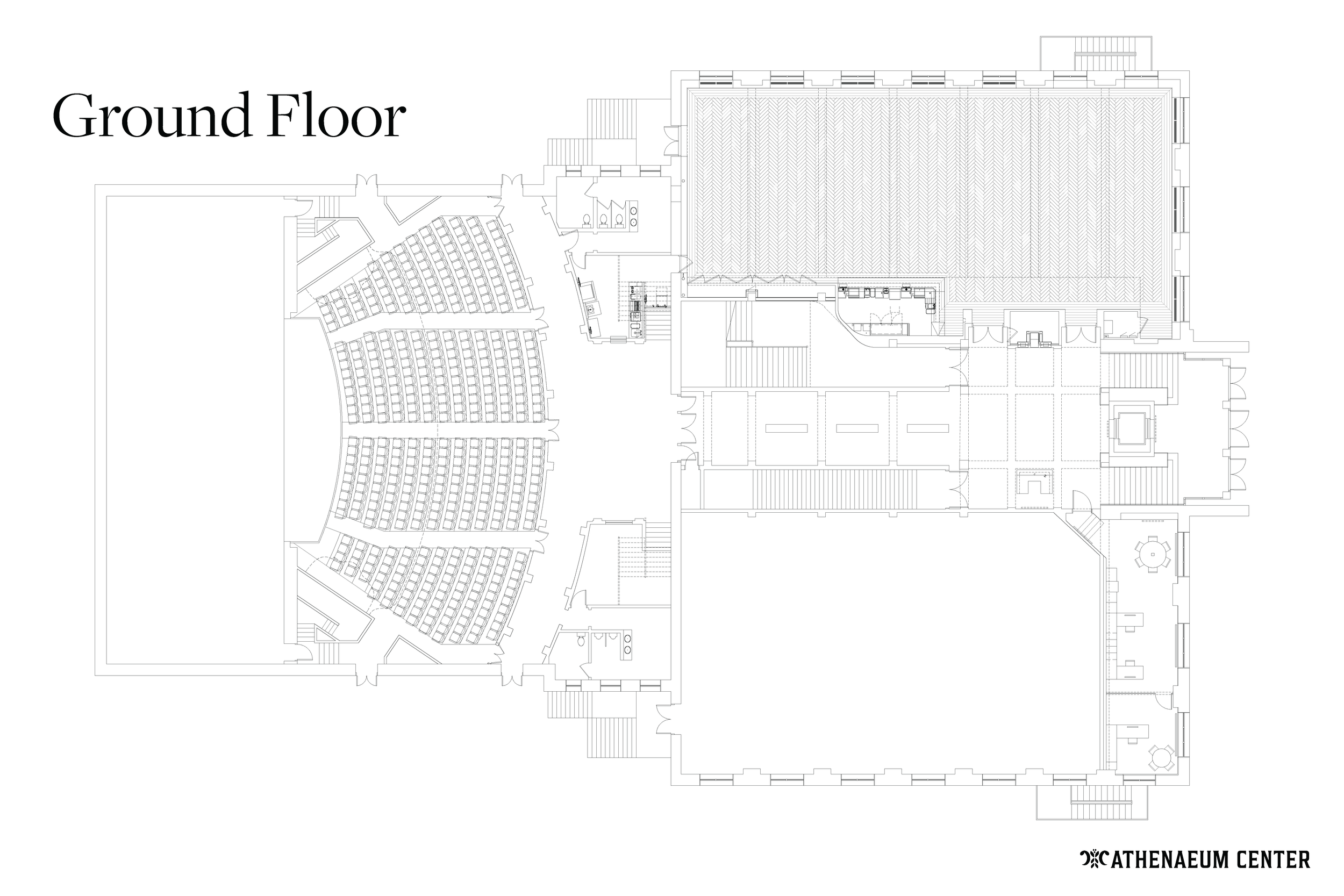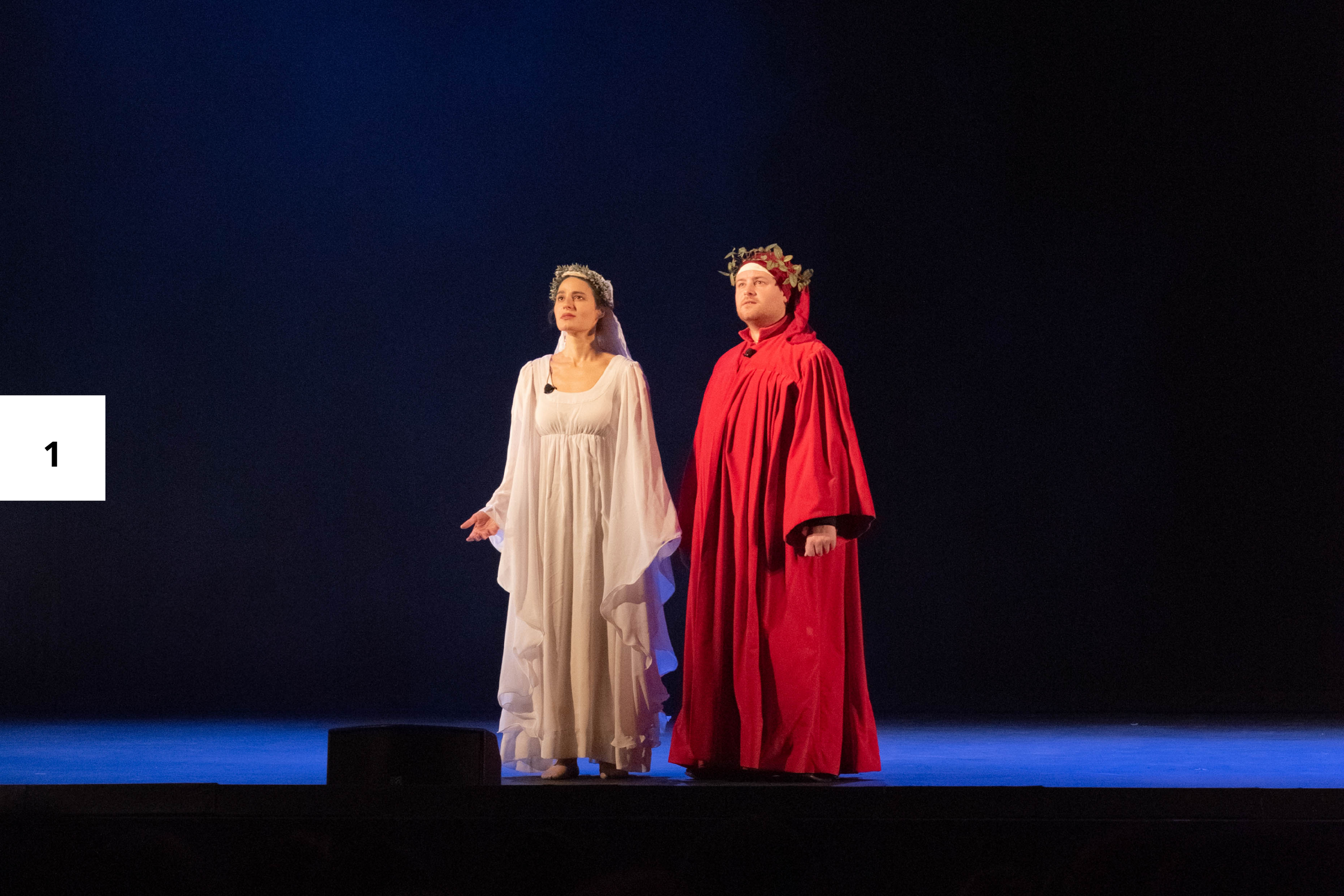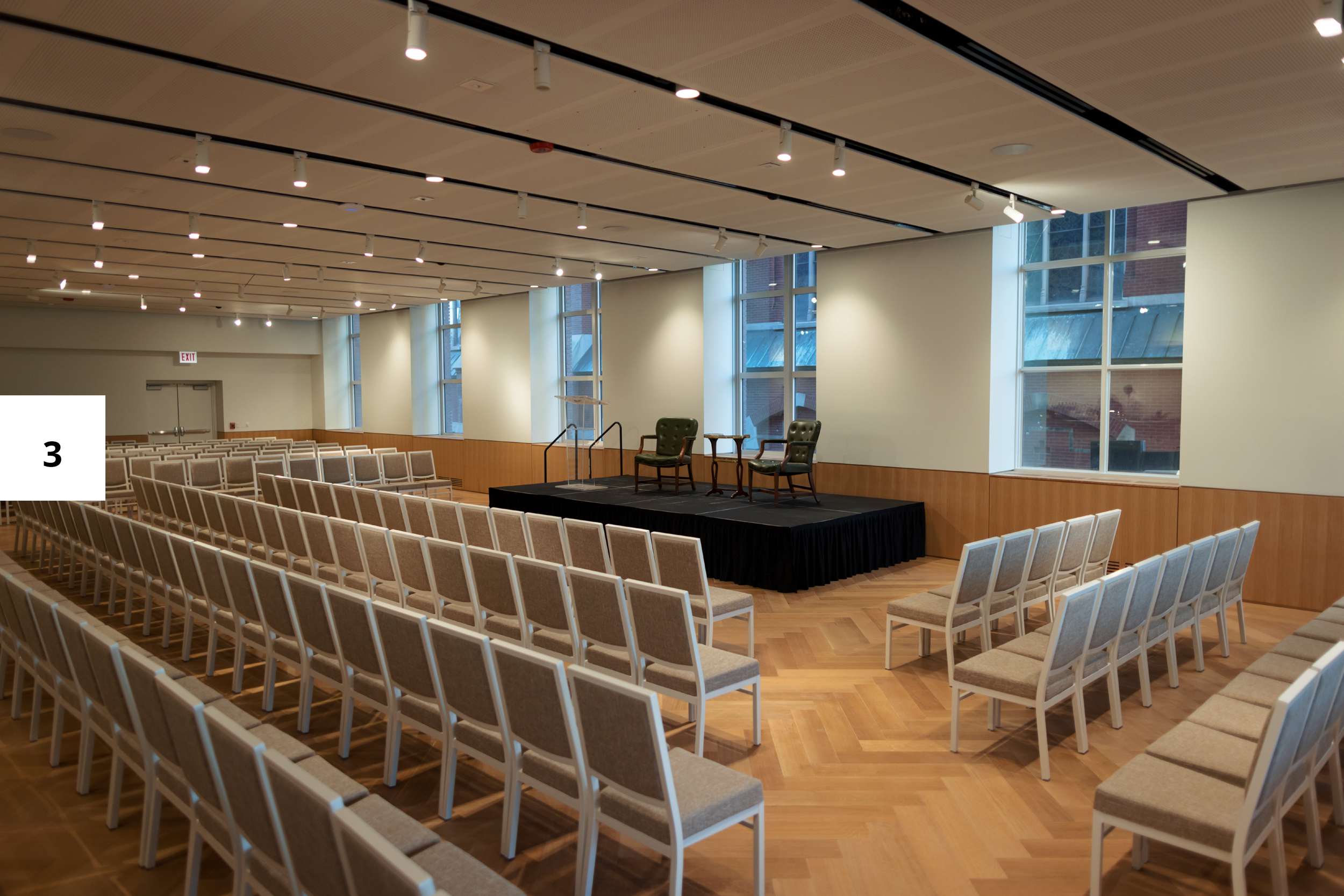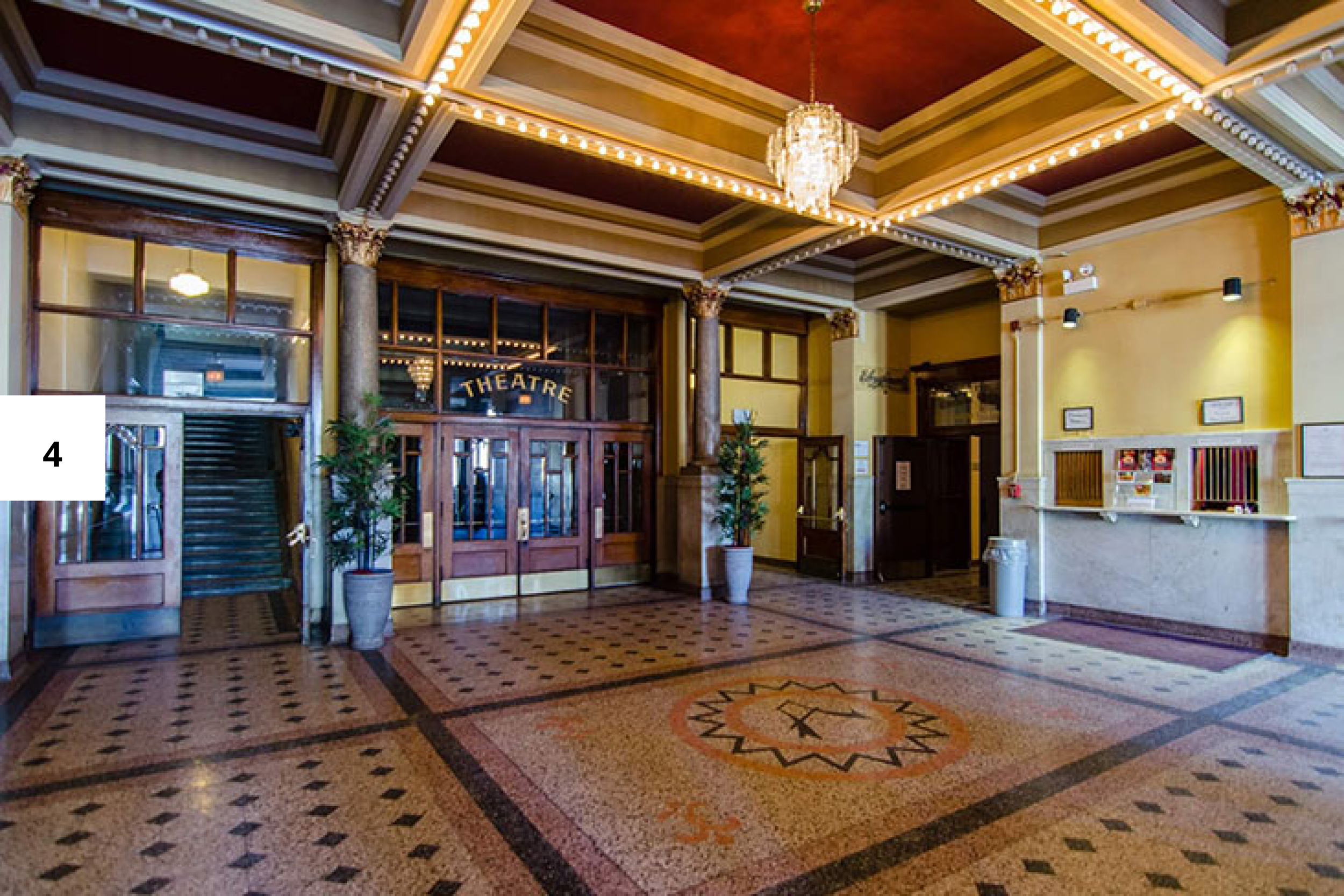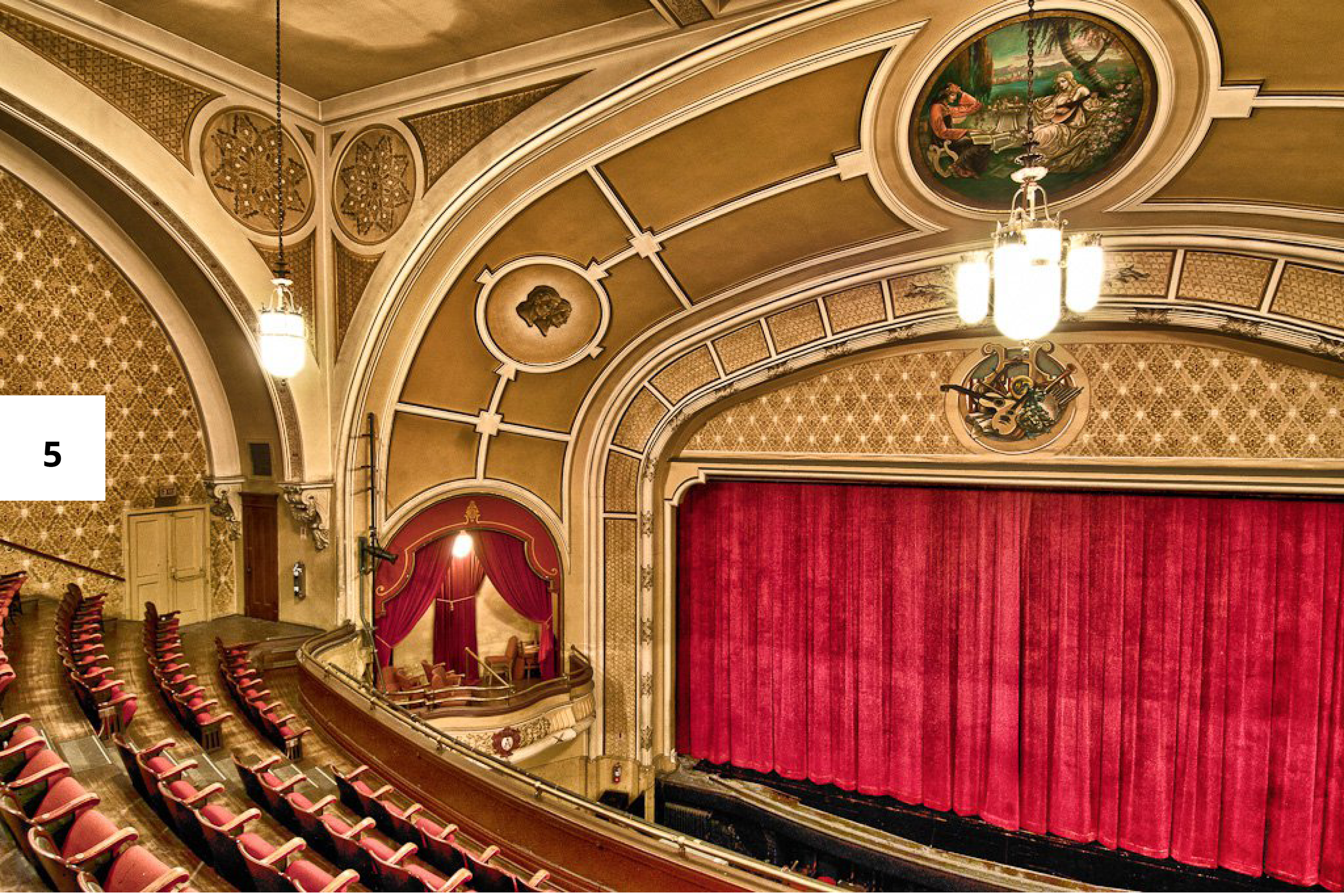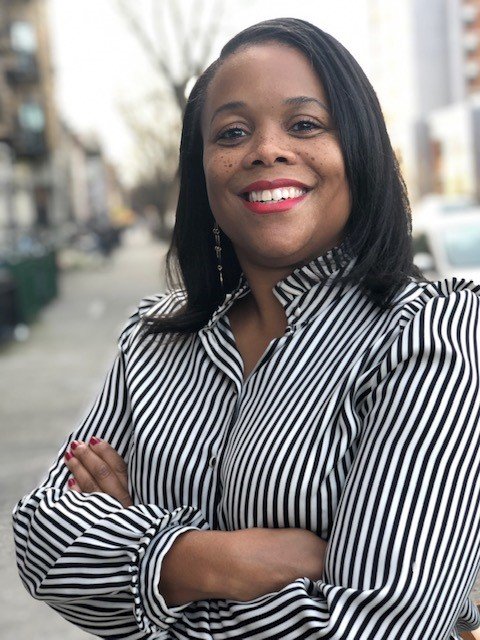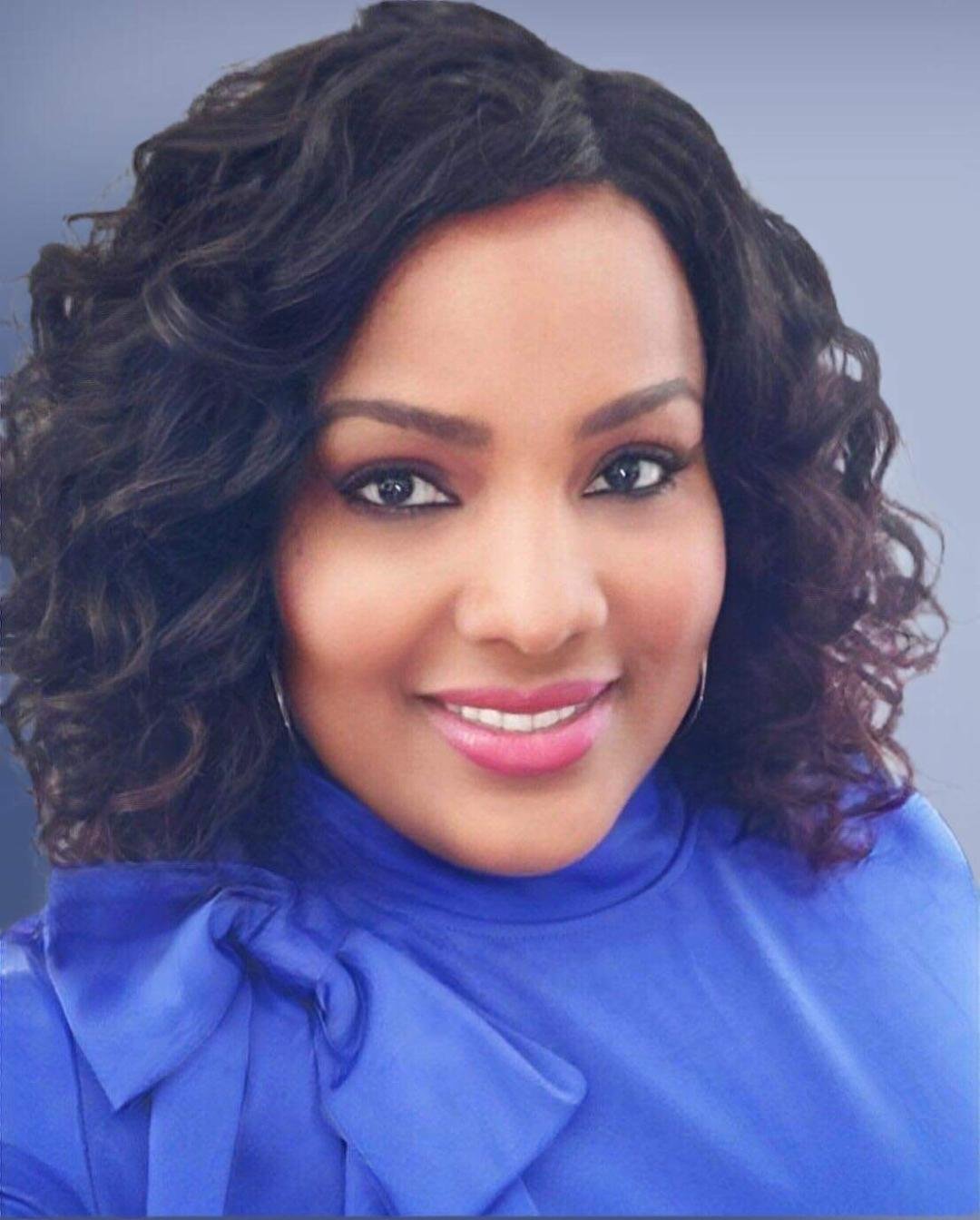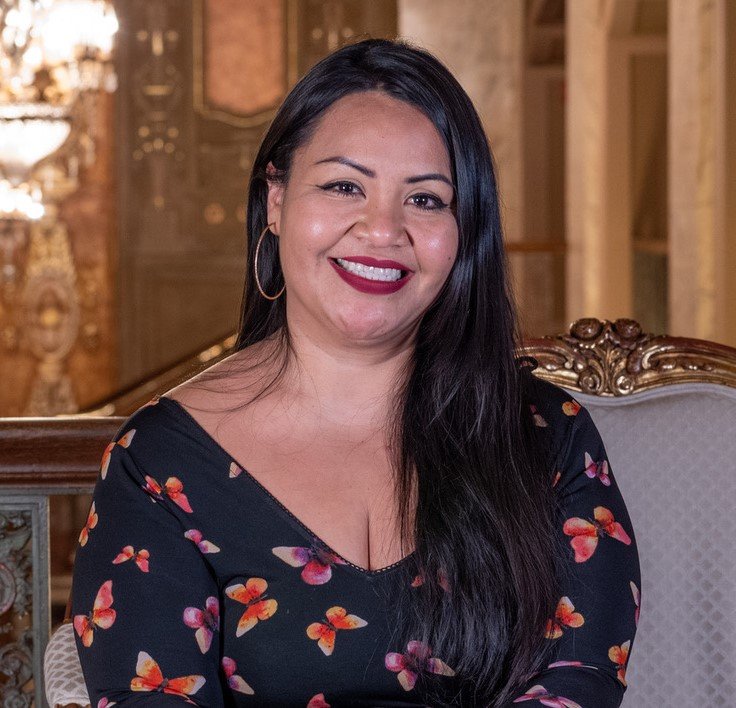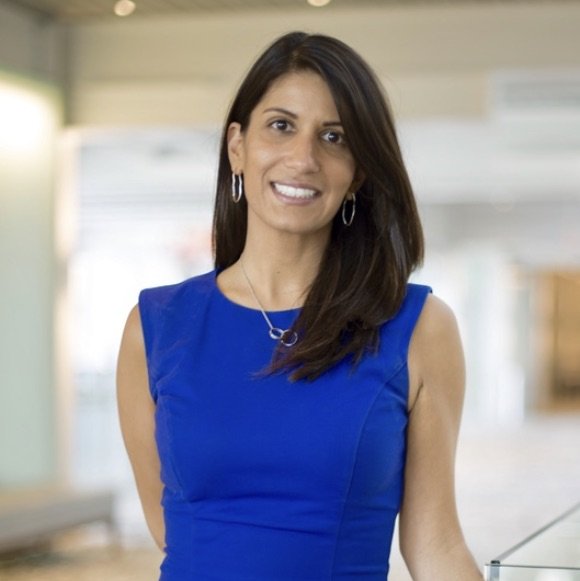
Presented By
The Green Room Zine No. 1
FROM RETURN TO RESET
What does the next chapter hold for the performing arts?
Letter from the Editor //
Welcome to the inaugural issue of the Green Room, a digital magazine designed for you–the next generation arts leader.
The Green Room will bring you the latest news, thought leadership, and innovations in arts administration, presented by AMS.
While the world has been thrown asunder over the past two years, the performing arts sector has been especially, and fundamentally, transformed. We’ve needed to ask ourselves: Who is coming back and who has not yet returned, and why? Who, and what mediums, are we competing with for audience retention? Which preferences are temporary and which will last?
The feature stories in this issue aim to explore these questions and, hopefully, shed some light. We interview powerhouse Rachel Moore, CEO and President of the Los Angeles Music Center, who has shepherded an iconic institution into a digital and community-focused era. We kick off a series that endeavors to share the power of analytics to answer seemingly abstract questions, and we showcase a new fellowship designed to affect meaningful change to our understanding of equitable opportunity for arts leaders. Finally, AMS Founding Principal Steven Wolff delivers some of the data AMS gathered during this tumultuous time, and shares his thoughts on how our sector can thrive in the new year and beyond.
Building The Green Room Zine has been incredibly energizing. We really hope you enjoy this first issue as much as we enjoyed putting it together. If you have thoughts, questions, or suggestions for future issues, we hope you’ll be in touch.
Culture is so rich,
Jordan Gross Richmond, Executive Editor

Interview //
THE CEO THAT BRINGS THE MUSIC CENTER TO THE PEOPLE
Rachel Moore, President and CEO of the Los Angeles Music Center, has built a career advocating for artists’ rights and bringing the most elevated art forms back to the community.
Now, leading one of the largest performing arts centers in the country, she has seized every opportunity to do just that for this LA cultural institution, while also bringing it into the digital age. From its education programs to local spotlights and large scale productions, the Music Center is a leader in educating, including, and inspiring its diverse audience.
In this interview we explore Rachel’s past trials and successes to understand how she makes bold decisions today, sparking growth and opportunity for the Music Center and the entire city of Los Angeles.
What inspired you to become a performer? Why ballet?
Moore: Ballet allowed me to block out the rest of the world and learn these skills, these rules that you could follow, and I had a wonderful teacher. It was a sanctuary. And the notion of trying to create something beautiful and special seemed like a worthy endeavor.
What skills from your dance training did you find useful as you transitioned from performer to CEO?
Moore: Because I had been a dancer I was a bridge between the business community and the artistic community. I spoke both languages. I understood the priorities. I was able to move things forward. Also, I think a lot of people in the private sector who think they can take over non-profit cultural institutions have a top-down approach. That’s not how I manage. I think you inspire people to want to go in a specific direction and motivate them to want to come with you in that direction.
After more than a decade as CEO of the American Ballet Theatre (ABT) in NYC, how and why did you begin working with the Music Center?
Moore: ABT was my home for 11 years, but I felt the need for a real sense of the civic side of the arts that I was not able to do there. I felt like I could do that work more at the Music Center, where we were a public/private partnership, we worked with people of all different disciplines and had the option of free and low-cost programming.
It’s about watching performers on stage but also about people being able to co-create with artists, or create on their own. Being part of a team where we changed our mission to be about deepening the cultural life of every resident in LA county was powerful.
Culture is everywhere. Through our privilege, we should support people on their own journeys and honor the work of their communities. That’s what gets me up in the morning. That notion resonates with people.
Do we still need to do a lot of work? Yes. But I’m really proud that we were thinking that way before it became fashionable. The Music Center’s buildings are owned by the county of LA. We are the beneficiary of county tax dollars and have a moral obligation to serve everyone in the county. That is a compelling driver to the work.
Moore as a Principal Performer at The American Ballet Theater, where she later served as CEO for 11 years. Courtesy: The Music Center
Moore at the Civic Dedication for the reopening of the Music Center Plaza for All on August 28, 2019. Photo: John McCoy
(1) Live Performance at the unveiling of the memorial honoring the late Jose Ramos, a former Army combatant from Whittier, CA who worked for more than a decade to see a day honoring Veterans of the Vietnam War recognized on August 18,2022. Photo: John McCoy (2) Live performance at the Civic Dedication for the reopening of the Music Center Plaza for All on August 28, 2019. Photo: John McCoy (3) 15,000 people attended Grand Park’s 10th annual 4th of July Block Party with food, music, performances, and fireworks on July 4, 2022. Photo John McCoy (4) Live performance at The Music Center. Photo: John McCoy (5) Live Performance at The Music Center. Photo: John McCoy (6) Grand Park’s 10th annual 4th of July Block Party at The Music Center on July 4, 2022. Photo John McCoy (7) Live performance at The Music Center. Photo: Will Tee Yang (8) Live performance at The Music Center. Photo: Will Tee Yang
Post-COVID, every industry has had to adjust. What are Angelenos currently longing for from live performances in this strange transition time?
Moore: People do want community. Part of the reason that ticket sales are slow coming back is that we’ve had a change in behavior. People are being more selective. We need to start telling more stories.
In the past the arts have told true stories, but they have not been complete. So now we need to build on what we’ve got. We don’t say the old stuff is bad, but focus on equalizing representation across the board. More people come when they start seeing themselves and stories that resonate with them.
We’re bringing a new ballet next year called Frida, based on the life of Frida Kahlo. It premiered in Amsterdam, and I sat in the audience and at the end of the first act there is a solo where Frida is bereft and just had a miscarriage. The woman next to me started to cry. When I went to check on her during intermission, she said to me, “No one has ever told my story”. That’s why we need to tell other stories. We will be bringing this ballet to the Music Center next.
Are there processes born from the pandemic that you foresee applying indefinitely at The Music Center?
Moore: The pandemic gave the performing arts community a real kick into the digital world. We entered it by trying to repurpose staff members and marketing to become digital, but it’s a lot more than that. The performing arts had not seriously contemplated it (AR, VR, Immersive, etc). Now we’ve decided to lean into it. We hired Kamal Sinclaire heading a 10-year project for digital at the music center. We want to figure out new ways of doing things on the campus in terms of how and where we use these new technologies.
If we’re going to be relevant, we have to understand this world. We cannot stick our heads in the sand on digital.
Could incorporating digital actually go hand-in-hand with a more community-centric approach?
Moore: Yes. We did this really fun project called ‘UP! The Umbrella Project’ with Polobolis and MIT with LED umbrellas and screens. We had about 100 people on the plaza, and all the elements were projected on a giant screen so they could see themselves.
It was all free and outdoors. It was a beautiful way to use digital art activation to get closer to the community.
From her experience as a professional ballerina, to her current venture to propel The Music Center into the digital age, it is clear that Rachel Moore has deep knowledge and rich inspiration to share.
For more about Rachel Moore and The Music Center, check out her extensive bio and follow @themusiccenterla.

Analytics Highlight //
DASHBOARD REPORTS THAT BOARD CHAIRS LOVE
ANATOMY OF A CHART: THE DASHBOARD
One of the greatest game changers for Performing Arts Centers (now more than ever) is Performance Analytics, which aggregates data to create a 360 degree view of arts institutions.
The Dashboard Report is the landing page for every Performance Analytics user. It’s where PAC leaders go to understand cause and effect at a 10,000 foot level, and to arm themselves with institutional knowledge and sector trends expected from executives at the edge of their craft. Let’s break it down.
ACTIVITY
Like any good strategic approach, the Performance Analytics dashboard starts with purpose—activity is your organization’s reason for being. It’s a measure of how well you gathered people during the year, not just in ticket sales, but in how many opportunities there were for the space(s) to be used.
REVENUE
The live arts fulfill two functions: public benefit, and the lesser-understood economic impact generation. The performing arts center is a significant contributor in the arts and culture ecosystem that represents 4.5% of GDP, and its ability to generate revenue is the root of its ability to fulfill its mission.
EXPENSES
The economic story starts with understanding the basic costs to operate. But as a leader of a complex institution, you also have to consider the cost of generating revenue. Of late, insights found in Performance Analytics are driving some PAC finance leaders to take a zero-based approach to budgeting. Good dashboard tools help you think differently.
THE BOTTOM LINE
No single report will answer all of your questions, nor all the questions of your stakeholders. A great dashboard is a data visualization that quickly gives you a meaningful overview of the institution’s performance in a way that helps you understand and tell the story like any great executive should. And by layering in historical data, everything you see is set against the context of past performance.
Now that’s Performance Analytics.
Interested in subscribing your organization to the strategic platform used by nearly every major PAC in North America? Reach out and see if AMS Performance Analytics is right for your team.
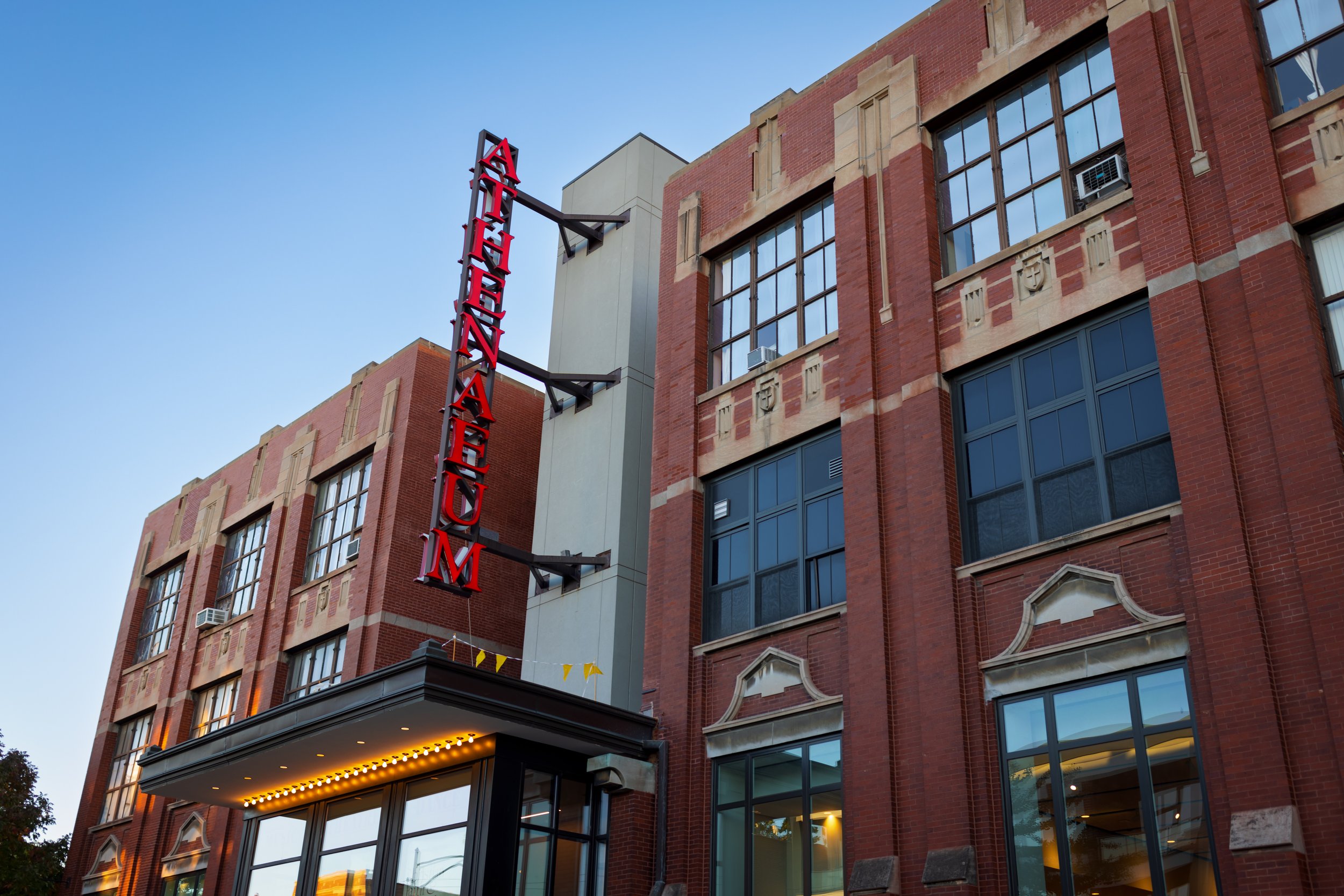
AMS Case Study //
TRANSFORMATION OF THE ATHENAEUM CENTER FOR THOUGHT AND CULTURE
In 2022, the Athenaeum Center for Thought and Culture in Chicago came to AMS Planning & Research for guidance amidst a major renovation.
They had begun an initial $4 million revamp of their first floor event space, and they had questions about how to move forward with the rest of the building.
The original structure is over a hundred years old and was built to serve as a faith-based gathering center. So it was important to the owners of the building to preserve its history and core values while creating new opportunities for activity and revenue.
To help them move forward confidently, we offered recommendations–some of them surprising–based on real data and input from stakeholders.
Originally constructed by the Redemptorist Fathers of St. Alphonsus, the Athenaeum is Chicago’s oldest continuously operating off-loop theater, serving as a home for the arts since 1911. The building was established by German Immigrants, the congregants of the church, who built the Athenaeum as a social hall for the parish, followed by a German-style opera house which now operates as a 985 seat theater.
Over time, the Athenaeum evolved into an open rental venue for various occasions. While the building was available for independent productions, rehearsals, and even storage space, internal programming was not a priority.
After a full pause in operations due to the pandemic shutdown, the building acquired a new operator, a new mission, and a new name: The Athenaeum Center for Thought and Culture.
The History
An illustration of the Athenaeum from 1911. Courtesy: Athenaeum History

THE GOAL
The new team reached out to AMS for our expertise in mapping out operations in a historic theater, establishing priorities for capital investments, and ensuring the venue remains viable, malleable, and usable long into the future.
The AMS team, led by Planning & Research Director Bill Blake and Associate Jon Faris, took a data-driven and community-focused approach. We surveyed a variety of potential facility users, including local arts organizations, individual artists, and local Catholic schools, garnering 39 responses to determine their space needs, activity types, and preferred rental terms.
The data collection process was followed by a rigorous business planning phase in which AMS worked collaboratively with the Athenaeum, Charcoalblue Theater Consultants, and John Ronan Architects to verify assumptions, develop scenarios, and ultimately, forecast programming, utilization, income, and expenses for normalized years of operations.
Here’s What We Learned
Many of our respondents indicated a need for space (new space, better space, bigger space and spaces that production teams and artists could make their own).
People were looking for quality space that could enable them to rehearse their shows and perform them in a professional grade small theater space, and also in the large 985 seat theater that’s currently there.
What’s lacking in Chicago is black box spaces that are technically and specially created, in terms of acoustics, quality seating, and production space, with professional grade equipment.
We used this data to make some new game-changing recommendations, including:
A business plan that incorporated the renovation and programming of a new black box theater
Renovations to the Athenaeum’s large 985-seat theater
Optimizing the first floor event space for activity and revenue opportunities (including a full size bar)
A new infrastructure layout to allow for more flexible spaces within the walls of a historic structure
The Approach
The Athenaeum First Floor Plan: Before
The Athenaeum First Floor Plan: After

SURPRISING OUTCOMES
Some of our recommendations came as a surprise to the client, specifically the conclusion that they didn’t need 2 black box spaces, but rather one really good one that is flexible and managed well. But by thinking about the space in this way, we opened more space for other flex purposes including a co-working office space for artists, non-profits, and others to work out of in the short run. This approach creates a mix of space that would produce revenue, meet needs, and still allow the client to have their own artistic programming.
AMS gave the Athenaeum the direction they needed in order to grow into this new phase of the institution. 2022 is the center’s first full season. 2023 will allow the new operator to see the full season cycle post-implementation. The client has already started their own mission-aligned programming, premiering an in-person comedy production titled Dante 360, a concert by the Hillbilly Toners, and other small scale performances.
(1) Live performance of an in-house production, Dante 360, at The Athenaeum’s Main Stage Theatre in November 2022. (2) Outside: The facade of The Athenaeum Center. (3) Inside: Foyer at The Athenaeum Center, now a renovated flex space for events. (4) Inside: Theatre lobby of The Athenaeum Center. (5) Inside: Main Stage Theatre. Courtesy for all: The Athenaeum Center for Thought and Culture.

Fellowship Spotlight //
LACNA FOUNDATION’S BIPOC FELLOWSHIP
A new BIPOC Fellowship is changing the game in arts administration leadership.
To many, it’s no secret: arts administration lacks diversity. According to the LACNA Foundation, only 7% of principal administrators of major performing arts centers are BIPOC, and only 16% of the leadership teams of these major organizations include BIPOC representation.
Fortunately, an initiative is in the works to change that imbalance.
Responding to the challenges of structural racism in performing arts institutions across North America, leaders from more than 50 performing arts centers (PACs) across the United States and Canada formed the LACNA Foundation to support efforts that enhance the potential of the performing arts field in the 21st century. Members include PACs with revenue of more than $5 million and are represented in the organization by their CEOs.
LACNA Foundation announced the launch of its groundbreaking fellowship program, the BIPOC Executive Leadership in the Arts Program in 2021, which already has one class of fellows across the finish line.
The First of its Kind
Developed by AMS Planning & Research, National Arts Strategies, and Stanford University, this program is designed to accelerate the development of management and leadership skills among qualified mid-career BIPOC professionals and provide them with a pathway to pursue executive positions in the most significant cultural institutions in the United States and Canada. Seed project funding for the program is provided by the performing arts centers themselves with additional support from Pivotal Ventures, a Melinda French Gates company, and The Ralph M. Parsons Foundation.
The fellowship especially encourages the growth of future C-Suite executives including chief executive officers, chief operating officers, chief financial officers and chief advancement/chief development officers.

THE GOAL: 30 by 30
30% BIPOC representation in the C-Suite by 2030.
The fellowship tackles this challenge head-on as a statement of commitment from these organizations to change their cultures and to diversify their leadership. It will help recognize and support the myriad qualified BIPOC arts professionals who are viable candidates for senior roles and strengthen their capacities to lead large civic cultural organizations into the future.
Fellows benefit from a multifaceted and experienced-based curriculum with five interlocking components: training on leadership theory and practice, residencies-in-practice at participating performing arts centers, one-on-one leadership coaching, networking opportunities and participation in a leadership summit.
Here’s How it Works
Hear from a Fellow // Dacquiri Baptiste
I was inspired to join this program because I was certain it would provide me an opportunity to grow professionally alongside peers in the field who could be facing similar trials within their organizations as they aspire to become leaders of the industry. I was looking for a moment to create common goals within the PAC community that help to continue art sharing in our cities.
I looked at this cohort as a group whose focus was centered in making effective shifts and progress in our field by way of leadership. This action is a vital component in continuing to make the arts a reflection of expression of the communities they serve.
A few goals that this program is helping me to accomplish are confidence, reassurance, and network building. I believe that surrounding yourself with a group of people you can confer with and bounce ideas off of is one of the greatest assets of this program. The cohort that has been brought together formed a group of the next level of leaders that will always have one another to rely on for accountability and reassurance while maintaining arts institutions.
How to get involved: If you are interested in learning more about the fellowship or sponsorship, check out: https://www.performingartscenters.org
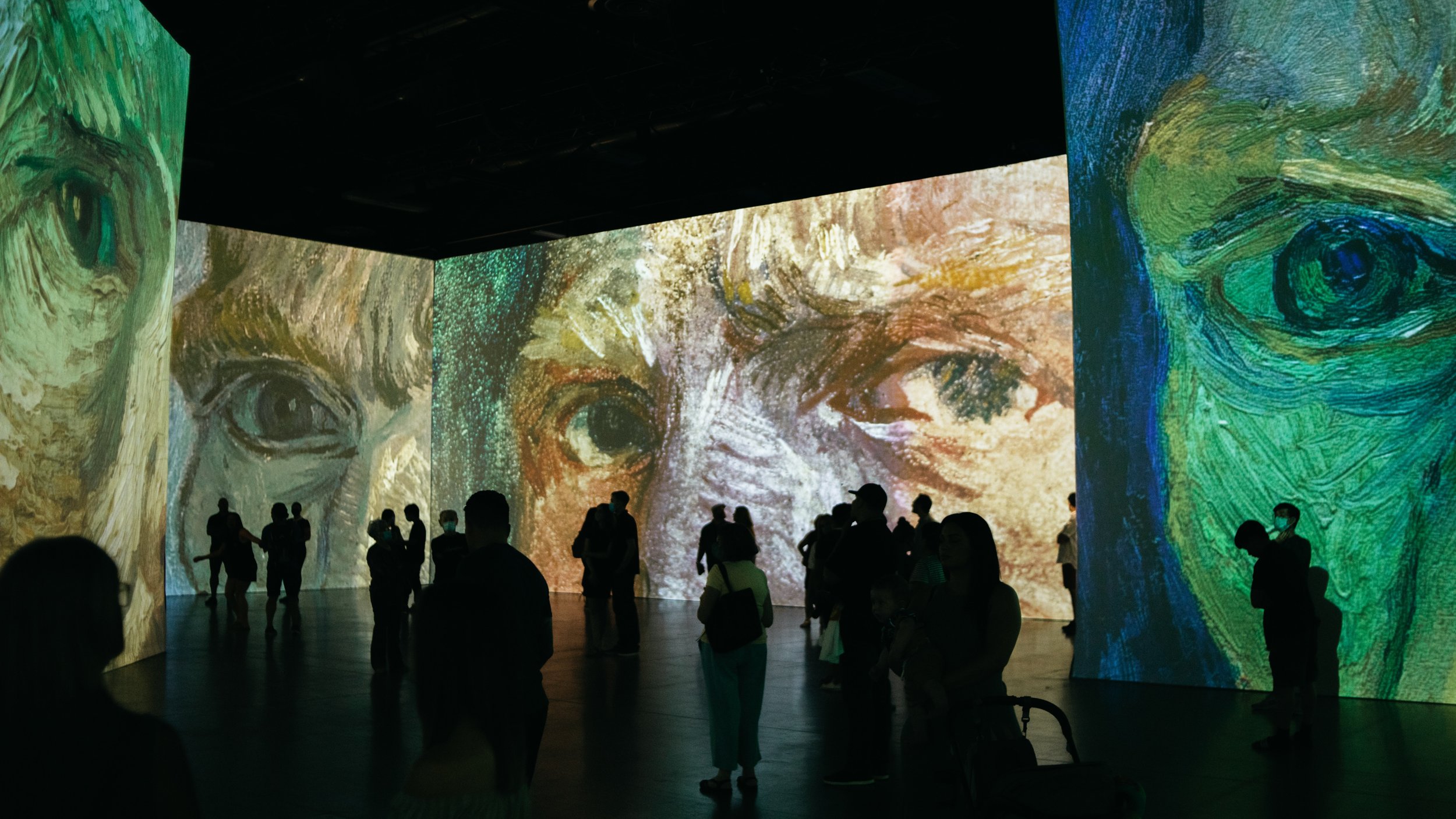
THE WOLFF REPORT
THE WOLFF REPORT
THE LONG RUNWAY: AUDIENCE BEHAVIORS AND ORGANIZATION IMPACTS
Remember in April of 2020 when we thought this pandemic would last a few weeks?
That month, we wrote an article on the Return and Reset of the Cultural Anchor Institution. We made some predictions and offered insight on how to survive this “temporary” chapter that ended up changing the plot of our world’s history.
In the article we spoke of Resilience, Readiness, and Reimagination. We spoke of immediate Recapitalization, prompting institutions to manage scarce resources and find new ways to monetize and create virtual revenue streams, so that we could survive and Return to our home, the theater, as soon as possible.
What we did not see coming were the elements of the pandemic that forced us to catapult decades into the future. In just two years, we’ve seen exponential change in technology and human behavior, some of which was long overdue. And while our patrons, performers and stakeholders have affirmed their love for live performances, we find ourselves at yet another pivotal point in history, asking:
“So, what now?”
To answer this question, we turned to the numbers. AMS Founding Principal, Steven Wolff, has provided counsel to arts, culture and entertainment enterprises on strategic initiatives for over 30 years and continued to partner with both domestic and global sources through the evolution of the Pandemic. Since May of 2020, the AMS team has surveyed hundreds of performing arts centers and producers, artists, and hundreds of thousands of patrons, gathering responses to help us understand:
Who is coming back and who has not yet returned, and why?
Who, and what mediums, are we competing with for audience retention?
What preferences are temporary and what will last for the foreseen future?
Many have returned—slowly.
The majority of audiences have returned to the theater, but the return has flatlined over the past few months.
Program interest is key to return.
Live performances have increased competition for audience members with the rise of digital media options and returned love for traditional pastimes, like baking, crafting, outdoor activities, etc.
Many people are still finding it a little uncomfortable to plan ahead and that impacts subscription sales. Patrons are now more selective with the shows they want to attend, moving away from the traditional subscription model.
Inflation has also affected patron’s selectivity.
Popular titles do well.
We’re seeing that new popular titles are doing really well (i.e. Broadway tour shows, headliner artists), while orchestras, ballets, opera, even some traditional stage plays are struggling. Touring shows and plays are also quite strong.
Salary and work-life-balance are top priorities.
Calls for fundamental systematic changes that were activated by the pandemic and recent social justice movements have sparked long term changes. Theater administrators want to work from home indefinitely. Salary and work life balance are top priorities. Diversity, representation and fair compensation are key to the long-term survival of Performing Arts Centers.
Immersive experiences are increasingly competitive.
30%
have attended an ‘immersive experience’ or site-specific installation in the past year.
34%
express high levels of interest in attending immersive experiences, and an additional 58% have some interest.
Organizations are challenged to address change inside and out.
The Pandemic has dramatically compressed the rate of change faced by arts and cultural institutions. Beyond issues of health and safety and changes in competition, leaders face challenges that impact every area of the business. Research suggests that the Pandemic compressed a decade’s worth of change into just a couple of years. As organizations seek to ‘re-imagine’ how they operate in this new environment, they will be called upon to be more creative, more innovative and more responsive.

How to Re-Imagine
Whether your institution went completely virtual and outdoors, minimized staff or shut down for months, you have proven that arts and cultural organizations are in fact quite resilient.
We have learned to survive and reset. And now, we are seeing the data and the opportunities it presents for long term success.
Here Are Steven’s Recommendations
// The arts are not a solo endeavor. Pursue partnerships and collaborations artistically and organizationally.
// Take risks. Pursue immersive, nontraditional opportunities and ideas that will draw in audiences and bring people together in new ways. Tell stories that have not previously been told.
// Deepen commitment to arts professionals. Artists and staff cannot continue to work and survive on their love for art alone. Performers, administrators and executives will no longer stay with organizations that do not actively value them.
Our current circumstances present us with an opportunity to propel into a whole new world of possibilities. While we face uncertainty, the data show us a new direction, new possibilities that could help performing arts centers thrive in ways we never saw coming. We look forward to seeing what you do with it.

